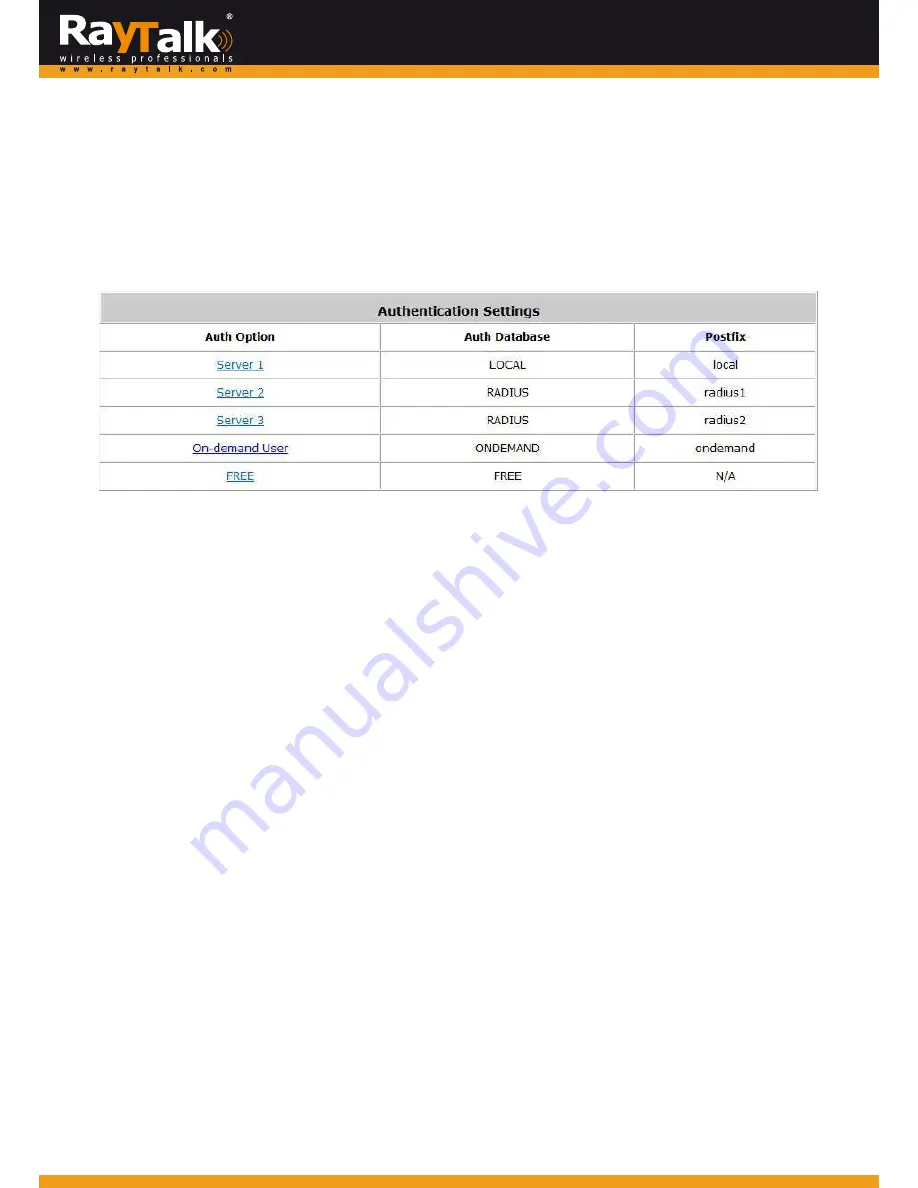
5
Who
Can
Access
the
Network
5.1
Type
of
Users
To
configure
Users,
go
to:
Users
>>
Authentication
.
This
section
is
for
administrators
to
pre
‐
configure
authentication
servers
for
the
entire
system.
Concurrently
up
to
three
servers
can
be
selected
and
pre
‐
configured
for
static
user
authentication.
One
server
uses
built
‐
in
LOCAL
database
while
the
other
two
servers
use
external
RADIUS
database.
In
addition,
‘ONDEMAND’
server
can
be
configured
for
temporary
user
authentication.
Authentication
Settings:
There
are
four
different
authentication
options
in
MiMo
Hot
Spot
Access
Point
Wi
‐
Fi
RayTalk
RA
‐
696
that
use
databases:
LOCAL
,
RADIUS1
,
RADIUS2
,
ONDEMAND
and
FREE.
Local
and
On
‐
demand
are
built
in
databases
with
user
credentials
stored
locally,
and
RADIUS
is
one
of
the
most
common
external
authentication
databases.
FREE
is
an
access
option
that
allows
users
to
access
networks
with
any
specified
identity
token
on
the
login
page.
Click
on
the
Authentication
Options
to
configure.
Auth
Option:
Set
a
name
for
the
authentication
databases
by
using
numbers
(0~9),
alphabets
(a~z
or
A
~Z),
dash
(
‐
),
underline
(_),
space
and
dot
(.)
only.
This
name
is
used
for
the
administrator
to
easily
identify
the
authentication
options
such
as
HQ
‐
RADIUS.
Postfix
:
A
postfix
represents
the
authentication
server
in
a
complete
username.
For
example,
user1@local
means
that
this
user
(user1)
will
be
authenticated
by
the
LOCAL
authentication
database.
Black
List:
There
are
5
sets
of
black
lists
provided
by
the
system.
A
user
account
listed
on
the
black
list
is
not
allowed
to
log
into
the
system,
the
client's
access
will
be
denied.
The
administrator
may
select
one
(or
None)
black
list
from
the
drop
‐
down
menu
and
it
will
be
applied
to
this
specific
authentication
option.
Configure:
Click
the
Configure
button
to
edit
a
specific
authentication
database
for
the
server.
For
example,
if
you
want
to
edit
the
Local
authentication
database,
please
click
the
Configure
button
for
Local
.
30
















































